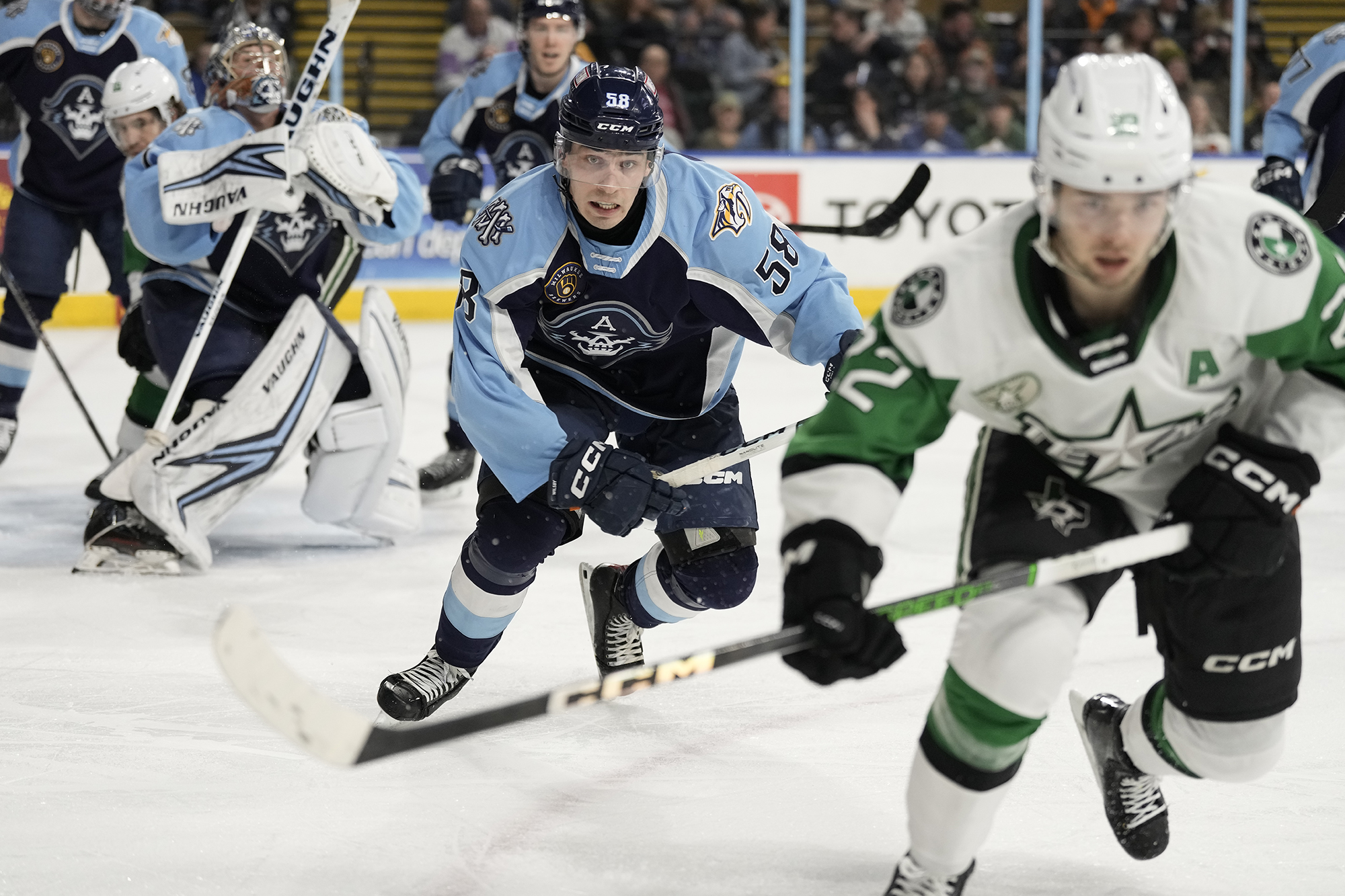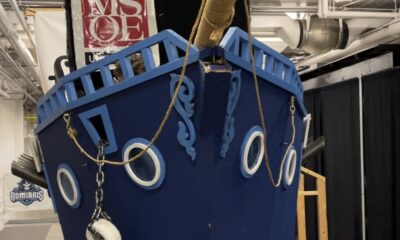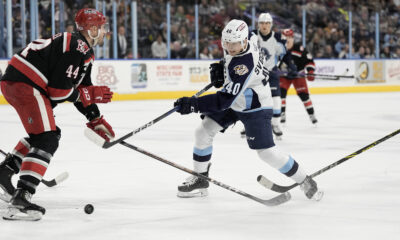With the NHL trade deadline less than a month away, plenty of eyes are on the Nashville Predators’ blueline. Players like Tyson Barrie, Alex Carrier, and Dante Fabbro are all being mentioned in trade rumors, and that highlights how much Barry Trotz is looking to the future when it comes to his defense.
In Milwaukee, the Admirals’ blueline is a good mix of reliable veterans and young prospects; those prospects present an interesting look at the future of Nashville’s roster as they play for a full-time NHL role.
It’s no secret that the first spot on Nashville’s blueline that opens up—whether it’s in March or the offseason—belongs to Spencer Stastney. The AHL all-star has been Milwaukee’s best defender this year; he’s allowed a team-best 1.36 goals against per 60 minutes of even-strength play and chipped in five goals and 19 points in 33 games. Just recently, Admirals’ head coach Karl Taylor endorsed the fact that the 2018 fifth-round pick is ready for his next opportunity.
But behind Stastney, there’s a trio of Admirals’ blueliners jockeying for important ice time in a seven-defender lineup.
The obvious next answer is Marc Del Gaizo. If there’s a challenge to Stastney’s crown as Milwaukee’s best defender, it’s the 2019 fourth-round pick. In 37 games, he leads the blue line with seven goals and 24 points; 13 of those points were primary ones scored at even strength.
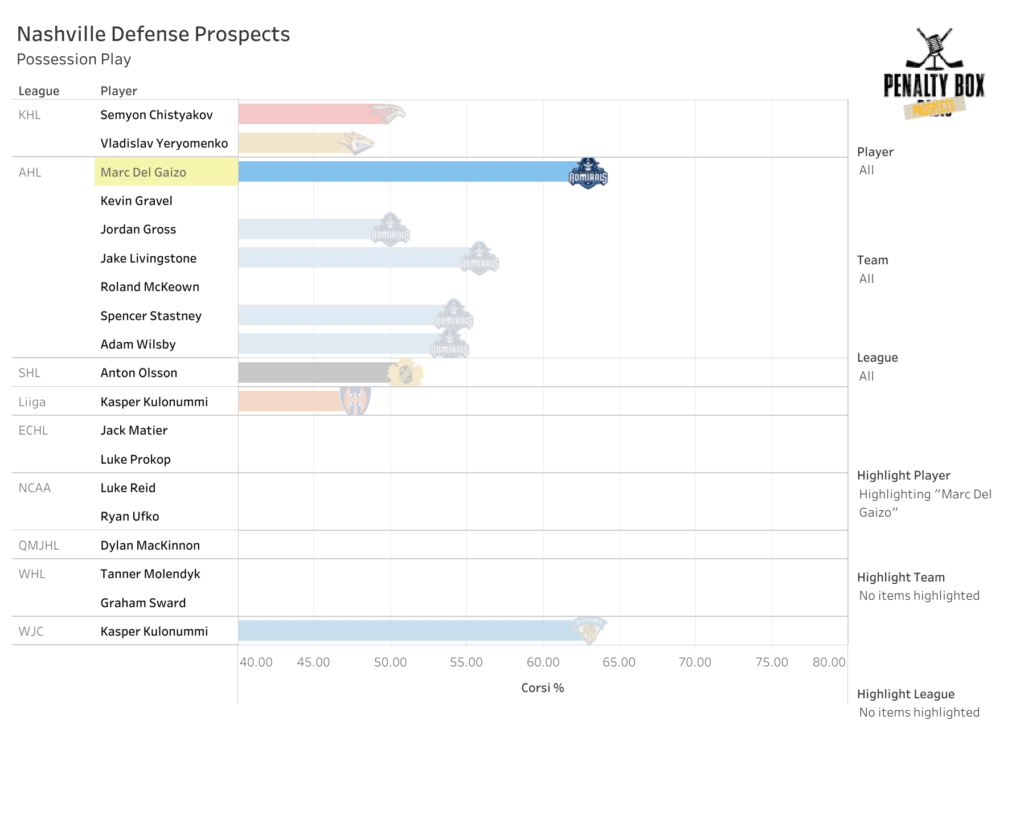
Del Gaizo has bested his teammates at possession play, recording a 62.96% Corsi at even strength in five games tracked. And he’s been a key cog in that shot generation, posting 13.79 shot attempts and 6.00 primary shot assists per 60 minutes.
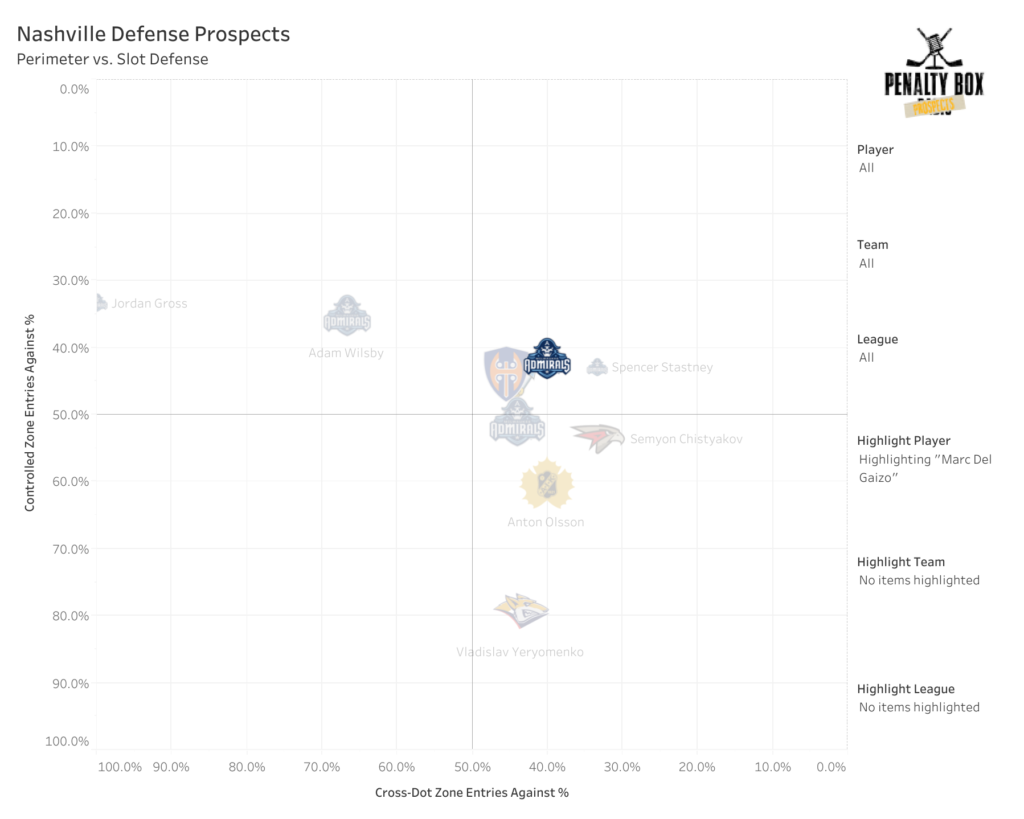
Defensively, Del Gaizo has been very good, limiting zone entries against him to just a 41.67% success rate; he’s also kept opponents who did gain the zone to the perimeter, allowing them to cut to the slot with the puck just 40.00% of the time. Where he’s struggling, however, is with zone exits. He rushes into first passes and haphazardly launches the puck out of the zone even when he’s free of pressure; that’s led to a subpar 40.00% zone exit success rate.
After Del Gaizo, things get a bit murkier. Jake Livingstone was a high-profile college free agent addition last spring and has been quietly adjusting to the pro game. In 39 games, Livingstone has notched two goals and 13 points and has played effectively at even strength, recording a 55.81% Corsi in seven games tracked.

In his own end, Livingstone has surrendered the most high-danger shots at 3.18 per 60 minutes. Relative to Del Gaizo, he’s been a bit more volatile in transition; Livingstone has allowed 51.02% of zone-entry chances against him but has successfully exited the zone with possession on 53.49% of chances.
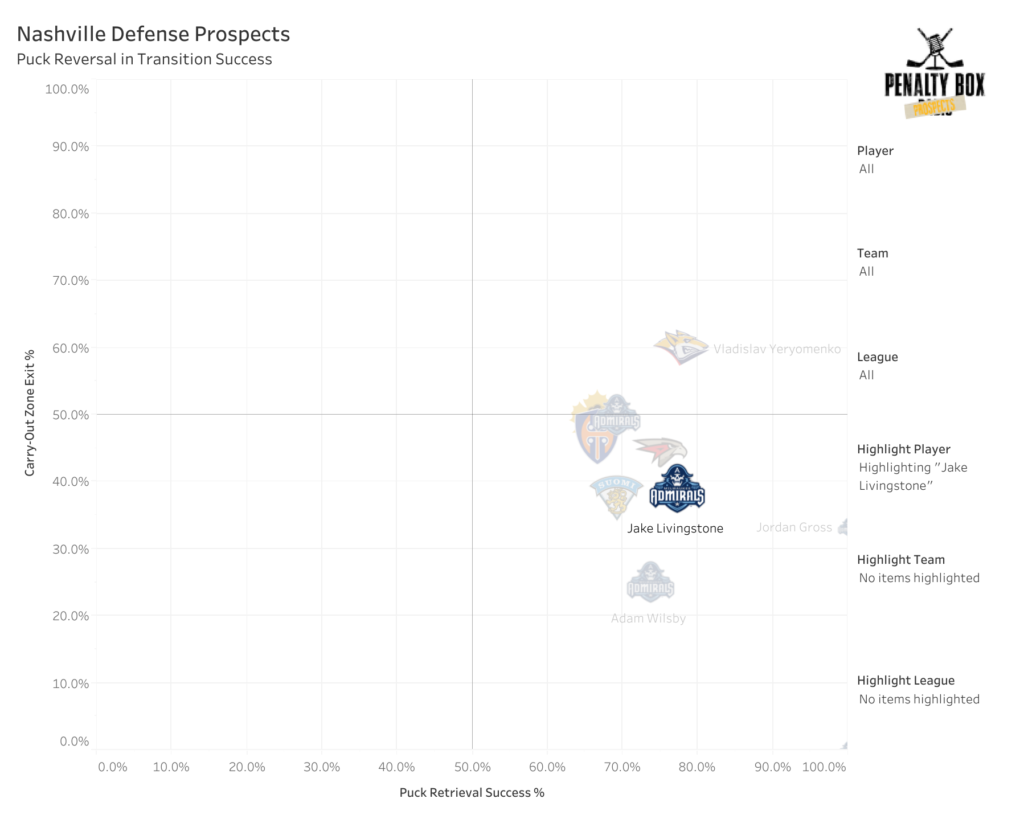
Livingstone has also been solid at reversing play on opposing teams. He’s successfully retrieved 77.27% of pucks he’s gone after and turned that into skating the puck out himself 39.13% of the time, showing an early penchant for activating up the ice.
Finally, there’s Adam Wilsby—a player I maintain doesn’t get enough praise in the organization. The 23-year-old has missed some time this year but has chipped in four goals and nine points in 32 games; seven of those points were primary ones scored at even strength.
Wilsby’s shot contributions don’t match Del Gaizo or Livingstone’s (just 8.47 shot attempts per 60 minutes in five games tracked), but he’s even more of a low-event player at his end of the ice, allowing just 37.39 shot attempts per 60 minutes. He’s given up just 1.41 high-danger shots per hour too.
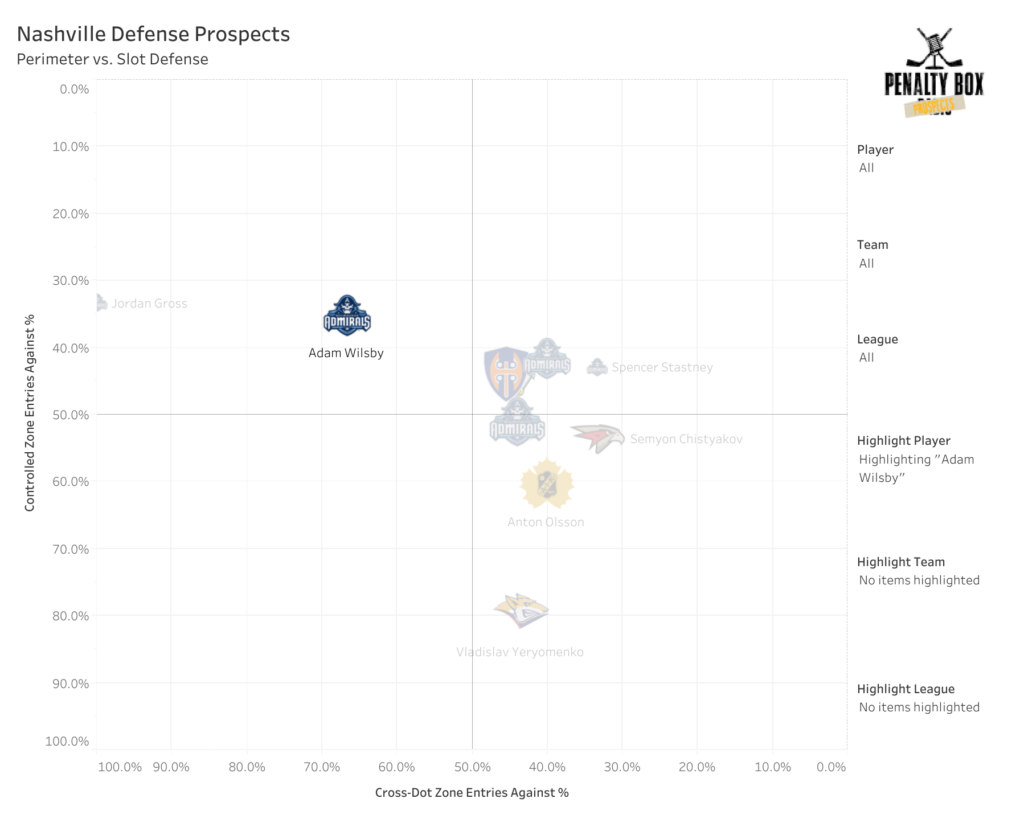
Defensively, Wilsby is a weird case. He’s been excellent at preventing opponents from gaining the zone, stopping them 64.71% of the time; but, when he does allow them to gain the zone, opponents are taking advantage of Wilsby’s bigger gaps to cross into the slot two-thirds of the time.
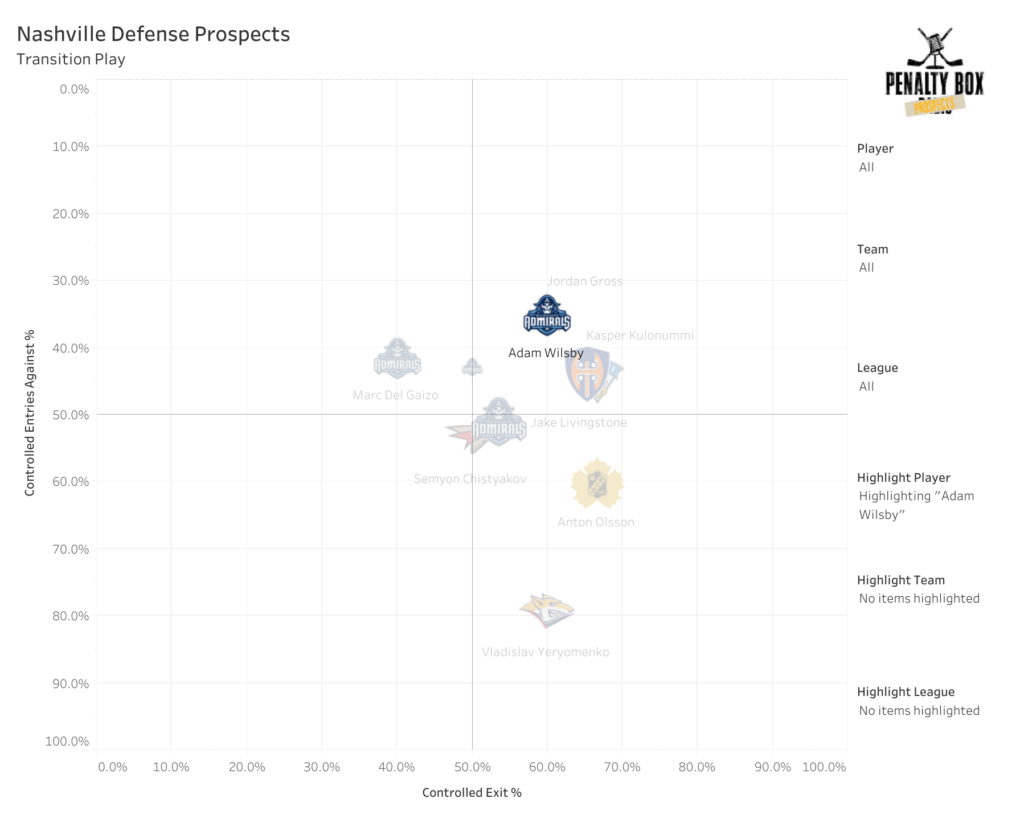
On the other hand, Wilsby has been dynamic breaking out of his zone with a 60.00% success rate.
The other factor compounding Wilsby’s future is rumors that he could head back to his Swedish club, Skellefteå, this summer when he hits restricted free-agent status.
There’s no guarantee any of these three defenders make it to the NHL full-time. But as the Admirals charge towards another long Calder Cup run, each will be looking to carve out an indispensable need that Nashville’s brass can’t ignore.

